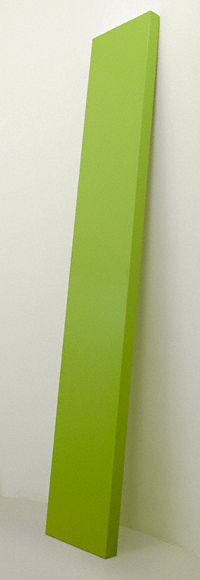For People Who Know the Difference

For People Who Know The Difference, 1967, John McCracken. Polyester resin, fiberglass, and plywood. 120 x 20 1/4 x 3 1/4 in. Collection of the Mohn Family Trust. © The Estate of John McCracken. Courtesy David Zwirner, New York
On View at the Getty Center: Pacific Standard Time: Crosscurrents in L.A. Painting and Sculpture, 1950-1970
McCracken began to fabricate his signature plank sculptures in 1966. He made them in his Venice studio by applying between 20 and 30 coats of automotive lacquer to a fiberglass-and-plywood body between 8 and 10 feet in length. Later, McCracken substituted the lacquer with colored polyester resin, poured horizontally to ensure a perfectly even surface, before he sanded and polished it to an immaculate shine. The whole process is very similar to that of surfboard manufacture. Conceptually positioned between painting and sculpture, the planks quite literally occupy a place in contact with both wall and floor. Indeed, these rectilinear sculptures came to define West Coast minimalism in the minds of many. But McCracken’s playful titles—such as For People Who Know the Difference—reject the absolute purity pursued by his East Coast counterparts, undercutting the seriousness of the works’ minimalist credentials.




